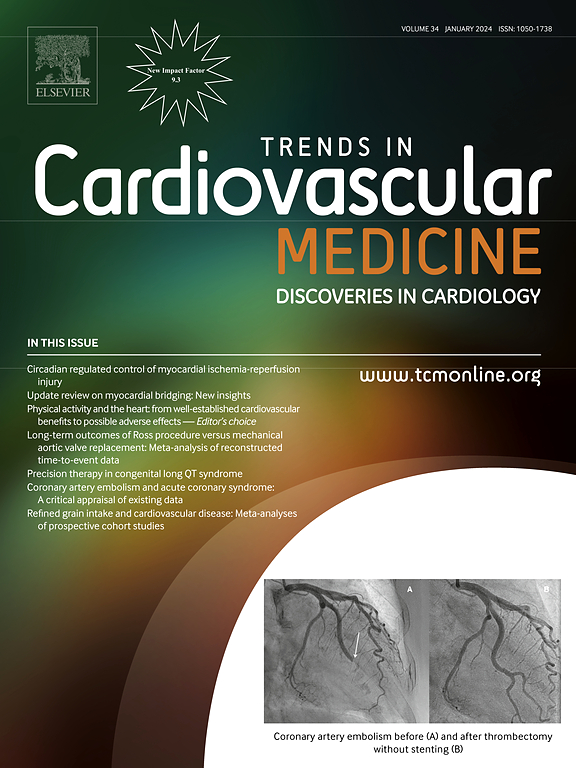Contemporary diagnostic approach to arrhythmogenic cardiomyopathy: The three-step work-up
IF 7.3
2区 医学
Q1 CARDIAC & CARDIOVASCULAR SYSTEMS
引用次数: 0
Abstract
Arrhythmogenic Cardiomyopathy (ACM) is a cardiac disorder characterized by non-ischemic myocardial scarring, which may lead to ventricular electrical instability and systolic dysfunction. Diagnosing ACM is challenging as there is no single gold-standard test and a combination of criteria is required. The first diagnostic criteria were established in 1994 and revised in 2010, focusing primarily on right ventricular involvement. However, in 2019, an international expert report identified limitations of previous diagnostic scoring and developed the 2020 Padua criteria with also included criteria for diagnosis of left ventricular variants and introduced cardiac magnetic resonance tissue characterization findings for detection of left ventricular myocardial scar. These criteria were further refined and published in 2023 as the European Task Force criteria, gaining international recognition. This review provides an overview of the 20 years of progresses on the disease diagnostic from the original 1994 criteria to the most recent 2023 European criteria, highlighting the evolution into our understanding of the pathobiology and morpho-functional features of the disease.
心律失常性心肌病的现代诊断方法:三步工作法。
心律失常性心肌病(ACM)是一种以非缺血性心肌瘢痕为特征的心脏疾病,可导致心室电不稳定和收缩功能障碍。诊断 ACM 极具挑战性,因为没有单一的金标准检测方法,需要结合多种标准。第一个诊断标准于 1994 年制定,并于 2010 年进行了修订,主要侧重于右心室受累。然而,2019 年,一份国际专家报告指出了之前诊断评分的局限性,并制定了 2020 年帕多瓦标准,其中还包括左心室变异的诊断标准,并引入了用于检测左心室心肌瘢痕的 CMR 组织表征结果。这些标准得到进一步完善,并于 2023 年作为欧洲工作组标准发布,获得国际认可。本综述概述了从最初的 1994 年标准到最新的 2023 年欧洲标准这 20 年来在疾病诊断方面取得的进展,重点介绍了我们对该疾病的病理生物学和形态功能特征的认识的演变。
本文章由计算机程序翻译,如有差异,请以英文原文为准。
求助全文
约1分钟内获得全文
求助全文
来源期刊

Trends in Cardiovascular Medicine
医学-心血管系统
CiteScore
18.70
自引率
2.20%
发文量
143
审稿时长
21 days
期刊介绍:
Trends in Cardiovascular Medicine delivers comprehensive, state-of-the-art reviews of scientific advancements in cardiovascular medicine, penned and scrutinized by internationally renowned experts. The articles provide authoritative insights into various topics, encompassing basic mechanisms, diagnosis, treatment, and prognosis of heart and blood vessel disorders, catering to clinicians and basic scientists alike. The journal covers a wide spectrum of cardiology, offering profound insights into aspects ranging from arrhythmias to vasculopathies.
 求助内容:
求助内容: 应助结果提醒方式:
应助结果提醒方式:


